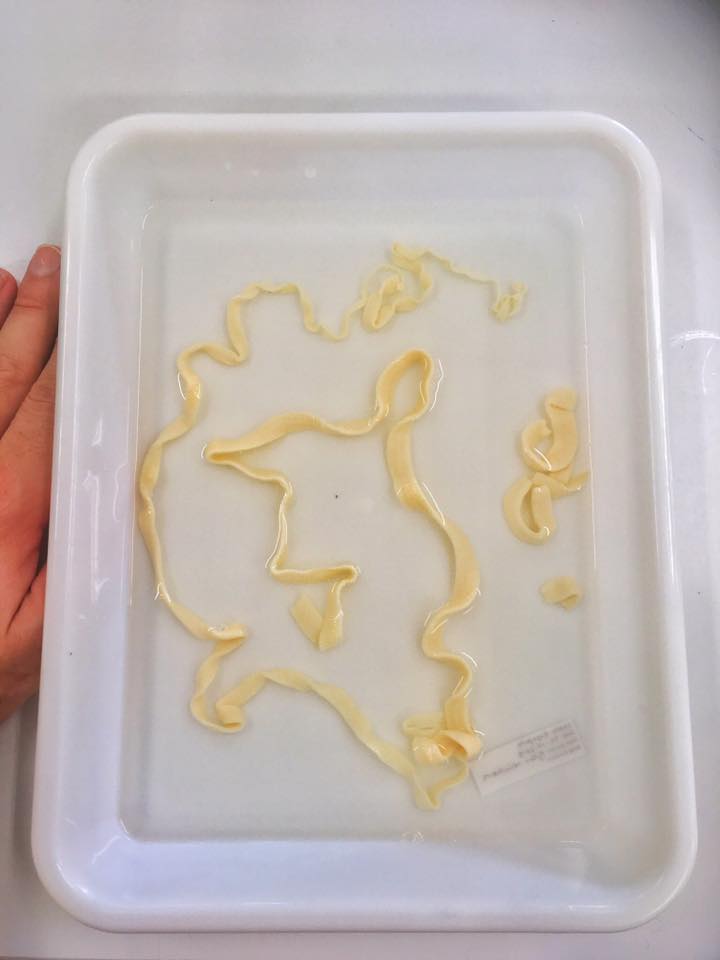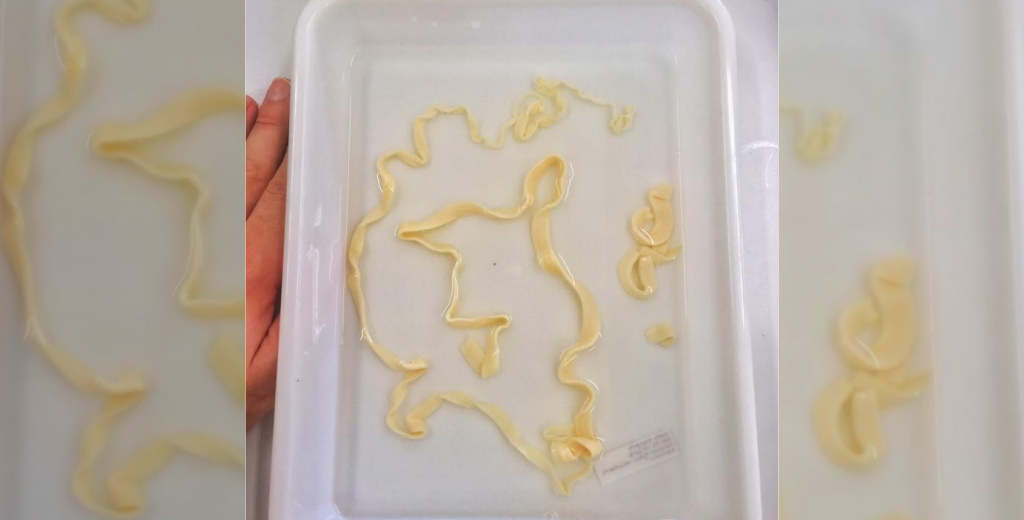A scientist from National University of Singapore (NUS), Mackenzie Kwak, shared this photo of a flat yellow tapeworm on Facebook on Thursday, Nov. 22:
In case you can't see it, here's the photo and text in the post. Photo by Mackenzie Kwak
Photo by Mackenzie Kwak
Check out this HUGE tapeworm collected from a reticulated python in Singapore! ?? ?
Mega predators sometimes have mega parasites!
Ordinarily, we wouldn't bother about the presence of a tapeworm, wherever it happens to be found. Worm? What? Tape? Who cares?
But look at it — we had to, multiple times. Is it really a worm?!
Especially photographed in that plastic container, one cannot help thinking that the very long tapeworm resembles a certain noodle most of us would be very familiar with.
It's really called a "meepok tapeworm"
Kwak shared that this stunning resemblance has not escaped parasitologists (scientists who study parasites, we guess) here either. Indeed, he says, this tapeworm is affectionately known as the "meepok tapeworm" at the Lee Kong Chian Natural History Museum.
"This species is known to science as Bothridium pithonis, though its more commonly called the python tapeworm, or as we affectionately called it at the museum, the ‘meepok tapeworm’!"
And indeed, commenters cast doubt on its legitimacy in qualifying for tapeworm status:






Found inside a reticulated python that was roadkill
The tapeworm was found inside the gut of a reticulated python that was collected after being killed by a car on the road somewhere in Singapore.
It was discovered during the python's post-mortem examination — done to help scientists investigate about Singapore's native ecosystem as part of Kwak's research studies:
"I’ve been studying parasitology for half a decade in Australia, and more recently Singapore where I’m now based. Almost no research has been undertaken on the parasites of Singapore! So, at present, my work is looking to record which parasites live in and on our local wildlife, how they affect their hosts, and whether new parasites may be invading Singapore with exotic pets and introduced animals...
Though it’s a tragedy when any of our wildlife die on the roads, parasitologists can still learn about wildlife and their parasites after death and discover all sorts of things about our native environments we couldn’t find otherwise!"
The meepok tapeworm only targets pythons
This tapeworm is actually a parasite that targets the pythons only so it does not infect human-beings.
The worm resides in the python, which acts as the host that feeds its growth. Unlike some parasites that are harmful to their hosts, the "meepok tapeworm" is apparently not found to affect the python much and, in fact, can potentially help with rat population control.
Says Kwak:
"The meepok tapeworm is good to its host and doesn’t seem to cause the python any disease or problems. If anything, it just makes the python a little hungrier (because the python has to feed two! – itself and the tapeworm), which probably just means the python ends up eating more pest rats! So in a small way, the tapeworm is doing its part to keep Singapore just that little bit more rat free!"
Interesting!
Top photo from Mackenzie Kwak's Facebook page
If you like what you read, follow us on Facebook, Instagram, Twitter and Telegram to get the latest updates.
